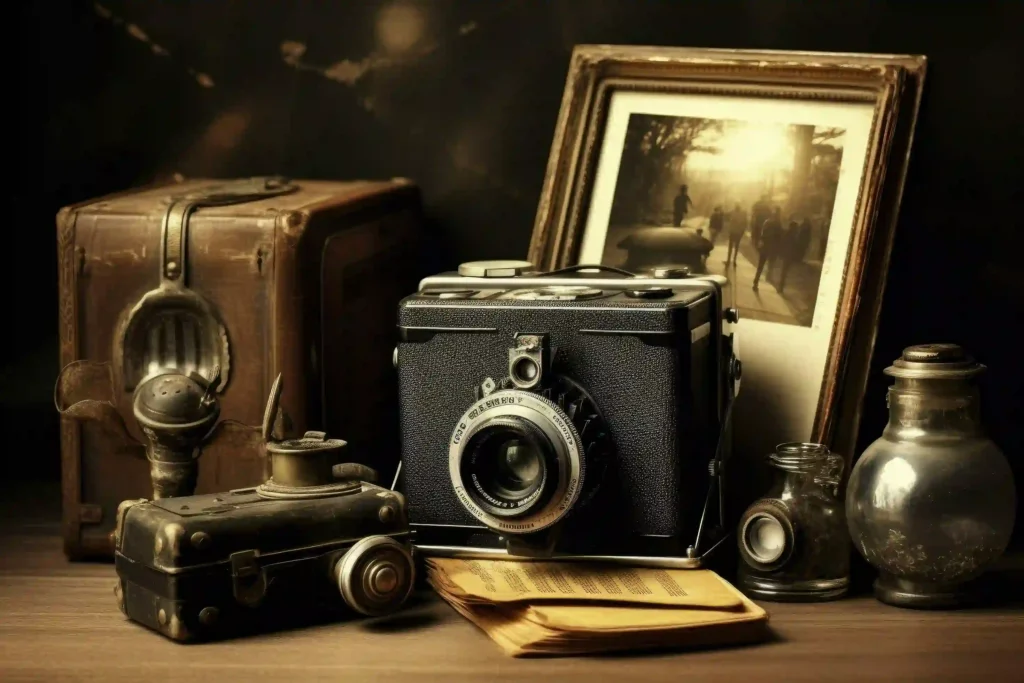Step back in time through the cultural significance of vintage ads, as they unveil a window to the past, showcasing the societal norms and consumer culture of previous generations. These visual relics not only mirror the advertising trends of their time but also encapsulate the values and dreams that once defined communities. By delving into the subtleties of these ads, we unravel a rich tapestry of historical tales that illuminate the evolution of social norms and the intricate relationship between commerce and culture. Exploring these artifacts provides a deeper insight into our shared heritage, inviting us to unravel the intricate layers of meaning embedded in each snapshot.
Key Takeaways
- Vintage ads in photography serve as visual narratives of cultural norms and values.
- They reflect the evolution of consumer culture and advertising techniques over time.
- Vintage ads capture historical intricacies, societal aspirations, and influences shaping past societies.
- Photography in vintage ads showcases art, commerce, and changing societal values.
- Themes in vintage ad photography reveal historical context, societal norms, and technological advancements.
Historical Context of Vintage Ads
Within the world of photography, the historical context of vintage ads serves as a window into the past, offering insights into the cultural, social, and economic landscapes of bygone eras. These ads provide a visual narrative of societal norms, values, and aspirations, reflecting the evolution of consumer culture and advertising techniques. Through analyzing vintage ads, we can unravel the historical intricacies and understand the influences that shaped past societies.
Influence of Vintage Ads on Culture
Vintage ads have played a pivotal role in shaping cultural perceptions and consumer behaviors throughout different historical periods. These ads reflect societal values, norms, and aspirations, influencing how individuals perceive themselves and others. By examining vintage ads, we can gain insight into the prevailing attitudes of the time, highlighting the impact of marketing strategies on shaping cultural trends and fostering a sense of nostalgia for past eras.
Evolution of Vintage Ads in Photography
Representing a visual journey through the past, the evolution of vintage ads in photography showcases the intersection of art, commerce, and cultural narratives. From the early simplistic black and white layouts to the vibrant and colorful imagery of later years, these ads reflect not only the changing techniques in photography but also the shifting societal values and consumer preferences over time. This evolution captures the essence of each era within a single frame.
Preserving Cultural Heritage Through Vintage Ads
Through the lens of vintage ads in photography, one can observe a tangible link to the cultural heritage of past societies. These ads serve as visual time capsules, showcasing societal norms, values, and aspirations of bygone eras. Preserving these vintage ads not only captures the essence of history but also provides insight into the evolution of consumer culture and advertising techniques, thereby contributing greatly to the preservation of cultural heritage.
Exploring Themes in Vintage Ad Photography
An in-depth analysis of the thematic elements present in vintage ad photography reveals intricate layers of historical context and cultural narratives. These themes often reflect societal values, gender roles, consumerism, and technological advancements of a specific era. Through examining these themes, viewers can gain a deeper understanding of the past and how it has shaped our present-day perspectives on advertising, identity, and societal norms.
Frequently Asked Questions
How Do Vintage Ads Impact Modern Advertising Strategies?
Vintage ads impact modern advertising strategies by providing insights into historical marketing techniques, consumer preferences, and cultural trends. Analyzing these ads helps marketers understand past successes and failures, enabling them to adapt strategies for contemporary audiences effectively.
What Materials Were Commonly Used in Vintage Ad Photography?
Commonly used materials in vintage ad photography included high-quality film cameras, lighting equipment for studio shots, and various props to enhance the visual appeal. These components were essential for creating engaging and memorable advertisements during that era.
Are There Specific Regions or Time Periods That Vintage Ads Predominantly Feature?
Vintage ads primarily feature specific regions or time periods based on consumer demographics, cultural trends, and economic factors. Regions like the United States and Europe often showcase different styles and products, while time periods like the 1950s emphasize post-war prosperity and modernization.
How Do Vintage Ads Contribute to the Understanding of Societal Norms?
Vintage ads offer a unique window into societal norms by reflecting the values, beliefs, and stereotypes prevalent during their time. Through their imagery, messaging, and target audience, these ads provide insights into the cultural landscape of the past.
Can Vintage Ads Be Considered a Form of Historical Documentation?
Vintage ads can indeed be considered a form of historical documentation. Through their imagery, messaging, and cultural references, these ads provide valuable insights into past societal values, consumer behaviors, and marketing strategies, serving as a window to bygone eras.
Conclusion
To sum up, vintage ads in photography serve as crucial visual artifacts that capture the essence of past societies, reflecting societal norms, values, and aspirations. These ads offer insights into the historical context and cultural significance of bygone eras, shedding light on the evolution of advertising techniques and photography styles. By preserving these images, we can better understand the influences that shaped past societies and explore the intersection of art, commerce, and cultural narratives.
Also Read: Making Eyelash Photography Work For You

